Don’t Let Winter Wreck Your Climbing Hydrangea: A Pro’s Guide
I’ve spent a good chunk of my life working with climbing hydrangeas. I’ve seen them looking absolutely glorious on old brick walls and, honestly, looking pretty sad on new construction even in milder areas. A lot of folks think winter is downtime for gardening, but for the pros, it’s prep time. The work you put in while your climbing hydrangea is dormant is what sets the stage for a spectacular show next year. It’s not about fighting the cold; it’s about giving the plant what it needs to handle it.
In this article
I still remember a call I got one spring from a new client in a total panic. Their stunning, well-established vine was barely showing any life. Turns out, the previous owner’s winter strategy was… to do nothing. A harsh, snowless winter had desiccated the roots and brutal winds had snapped major stems. We managed to save it, but it took two full seasons to look good again. That really drove home a lesson for me: proper winter care isn’t just a nice-to-do, it’s everything.
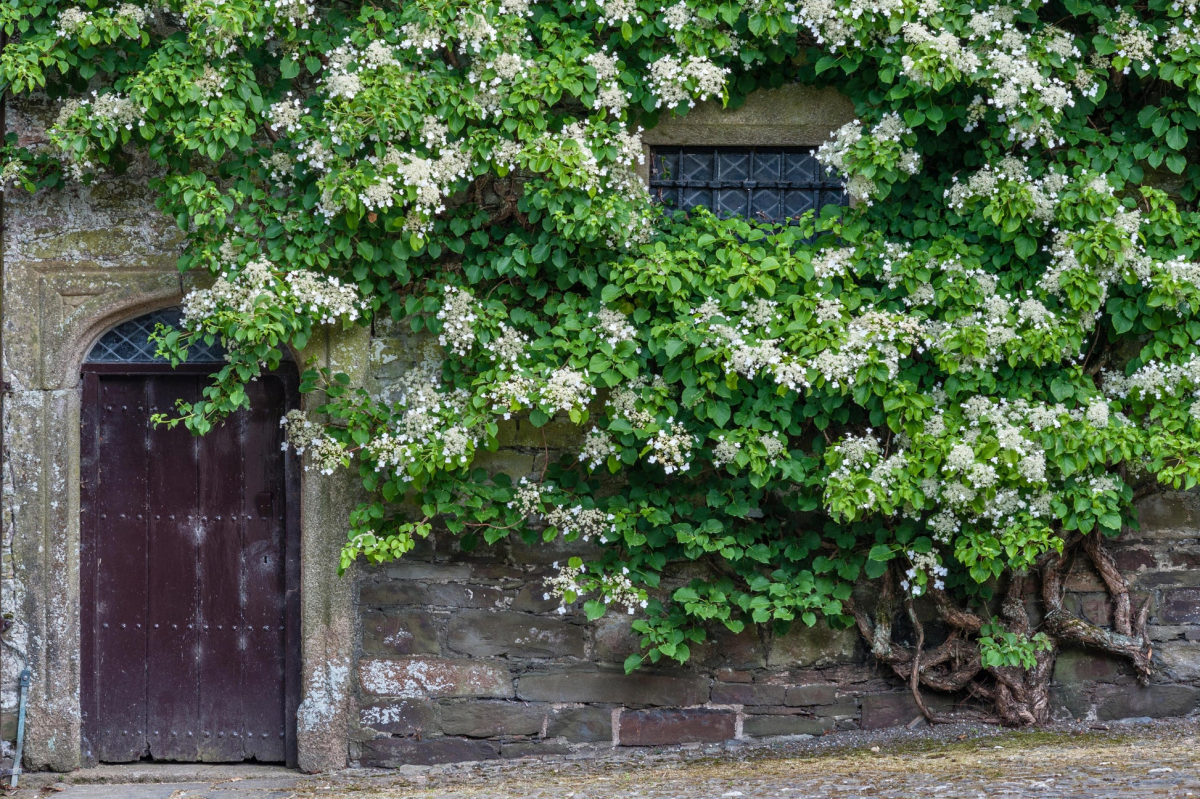
Heads Up: The Top 3 Winter-Care Mistakes I See All the Time
Before we dive deep, let’s get this out of the way. If you just skim this article, at least read this part. Avoiding these common pitfalls will put you way ahead of the game:
- The Mulch Volcano: Piling mulch right up against the main stems. It seems protective, but it traps moisture, invites rot, and gives pests a cozy winter home. It’s a killer.
- Winter Fertilizing: Giving your plant fertilizer in the fall or winter is a big no-no. It encourages weak, new growth that gets zapped by the first frost, wasting the plant’s energy.
- Pruning at the Wrong Time: Hacking away at your vine in the fall can remove next year’s flower buds and stimulate growth that will just die back. Patience is key.
What’s Actually Happening to Your Vine in Winter?
To really protect your climbing hydrangea, you need to get what’s happening inside it. The plant isn’t dead; it’s in a deep sleep called dormancy. This whole process is a brilliant survival trick triggered by shorter days and colder nights.
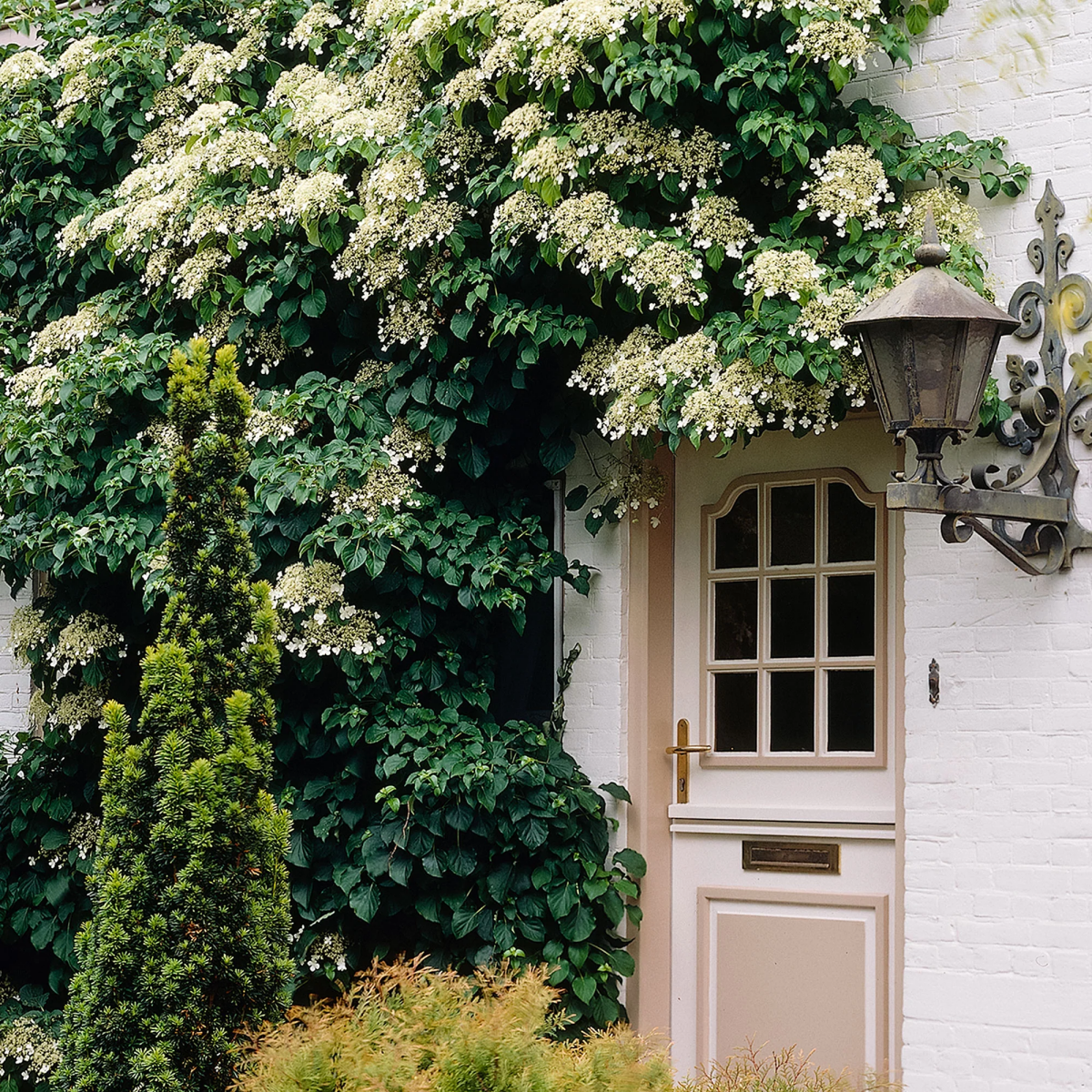
Think of the root system as a battery pack. All autumn, the plant is pulling the last bits of energy from its leaves, converting it into carbs, and storing it all in the roots. This is the fuel it needs for that big push of growth in the spring. This is exactly why we focus so much on protecting that root zone. If the roots freeze and thaw repeatedly or dry out, that battery pack gets drained.
Meanwhile, the woody stems are also toughening up in a process called hardening off. But here’s the catch: the flower buds for next summer are already formed on that old wood. They’re tiny and incredibly vulnerable. A blast of extreme cold or drying wind can wipe them out, leaving you with a perfectly healthy vine that produces zero flowers. So, protecting from wind is just as vital as protecting the roots.
By the way, it pays to know exactly what you’re growing. Most of us have the classic climbing hydrangea, which is a tough plant, usually good down to Zone 4 (that’s a chilly -30°F!). But sometimes, nurseries mislabel things, and you might have its look-alike, the Japanese hydrangea vine. It’s a beautiful plant, but it’s a bit more tender, happier in Zones 5 to 7. If your vine always seems to struggle in a Zone 5 winter, you might just have the less hardy variety. A quick search for the USDA Plant Hardiness Zone Map online will tell you what zone you’re in.
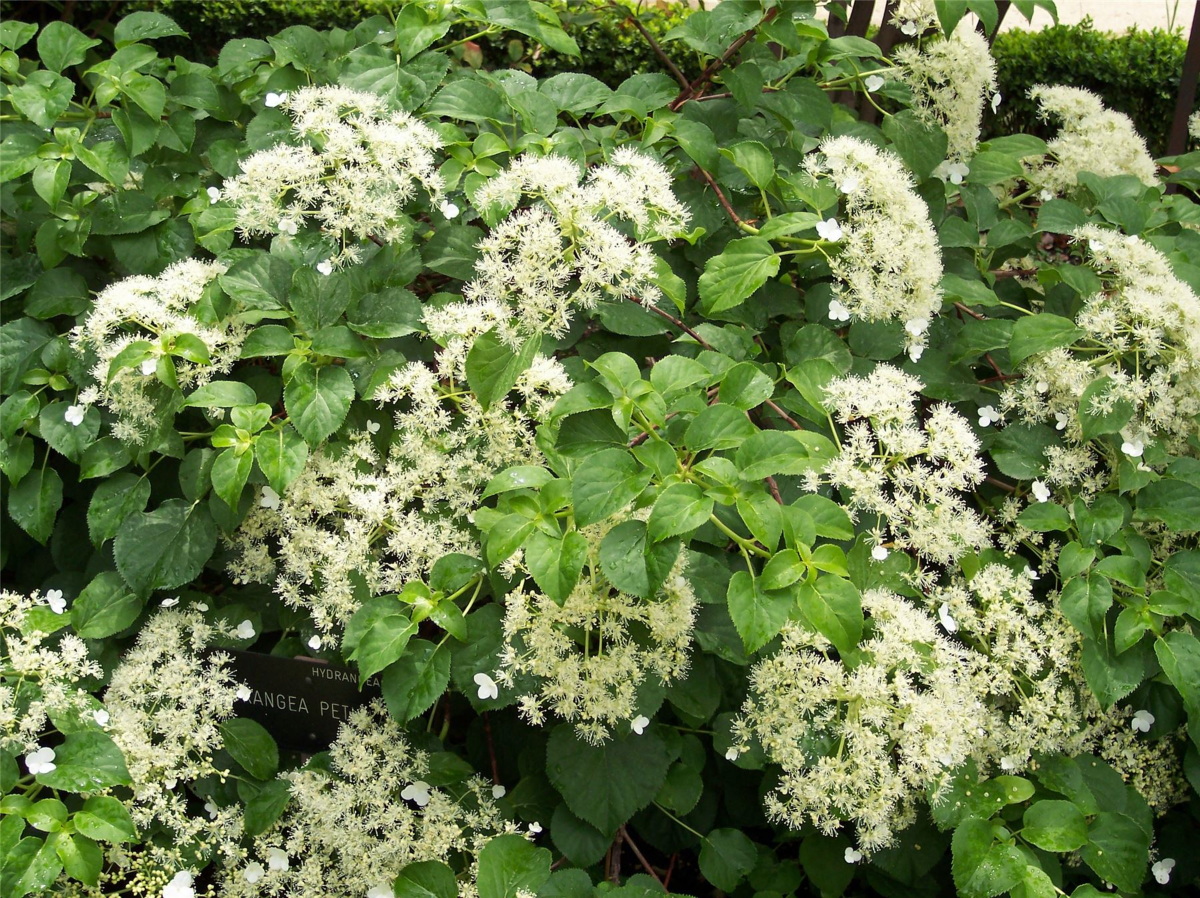
Your Pre-Winter Walk-Through
In late autumn, before the ground freezes solid, I do a full assessment of every climbing hydrangea I care for. This isn’t a quick peek; it’s a detailed inspection that takes a good 15 to 30 minutes per plant. For me in Zone 6, this is usually around late October. If you’re in a warmer Zone 8, it might be closer to early December. Don’t skip this—it’s what separates a thriving vine from a struggling one.
First, check the support structure. These vines cling with little aerial rootlets, which are strong on solid brick. But if your vine is on a wooden trellis or fence, give it a good, firm wiggle. Ice and snow add a shocking amount of weight. A wobbly trellis needs reinforcing now. A beginner-friendly fix is to add a few galvanized L-brackets or some 3-inch exterior-grade screws to anchor it more securely to the wall. If any vine sections are flapping in the breeze, secure them loosely with flexible plant ties.
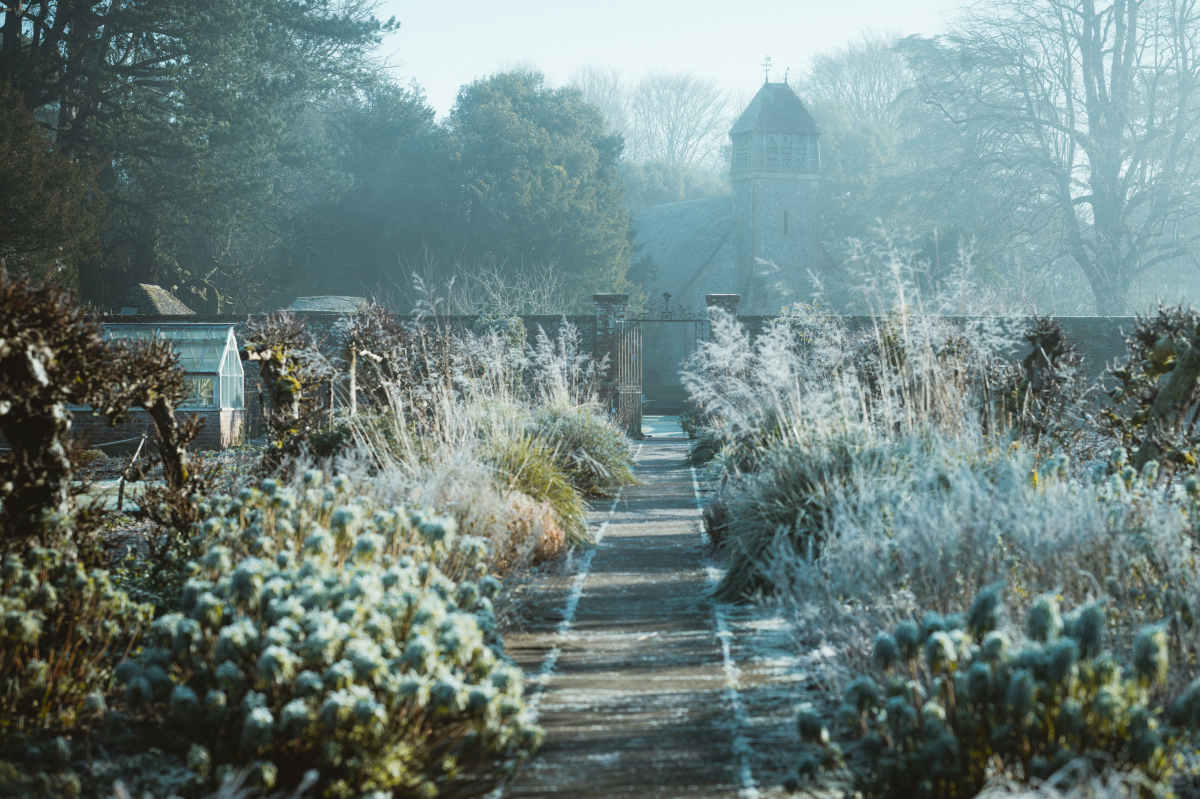
Next, think about your microclimates. A vine on a south-facing wall gets baked by winter sun, which can trick it into waking up too early. A north-facing wall gets hit with the coldest winds. A sheltered corner is a plant’s paradise. Understanding these little spots helps you decide where to focus your efforts. Often, a vine on a windy corner needs a burlap screen, while another on the same property just needs mulch.
Finally, check the soil before it freezes. Grab a handful near the base. If it’s dusty, water it deeply. And when I say deeply, I mean it. For a mature vine, we’re talking about 5 to 10 gallons of water, applied slowly so it all soaks in. If the soil is soggy, you might have a drainage issue, which is a death sentence in winter.
Winter Watering and Feeding: The “Do Less” Approach
It’s easy to kill plants with kindness. When it comes to winter, your climbing hydrangea needs a very light touch.
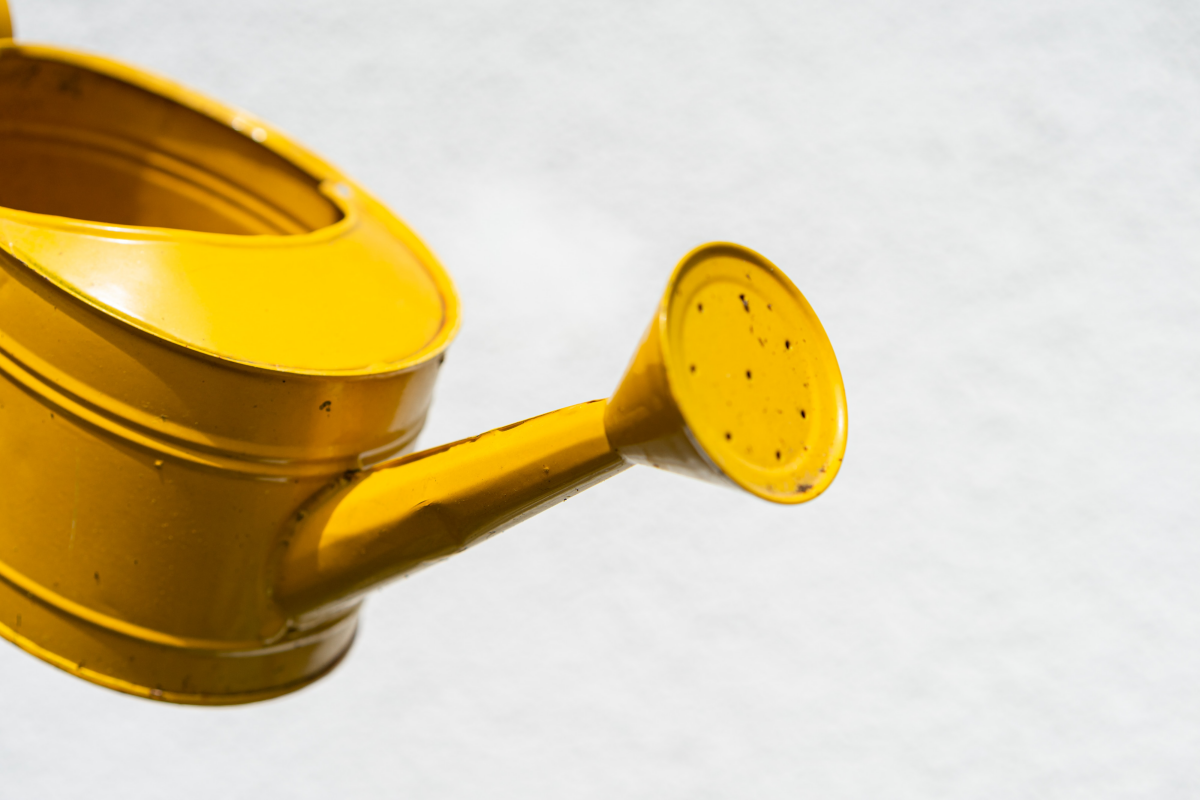
For watering, the rule is simple: If your ground freezes solid, give it that one last deep drink before the first hard freeze, and you’re done. If you’re in a milder climate (Zone 7+) or having a weirdly dry, snow-free winter, check the soil once a month. If the top couple of inches are bone dry, give it a drink on a warmer day, just enough to moisten the root zone.
And for feeding? This is a hard and fast rule: Do. Not. Fertilize. In. Winter. I can’t say it enough. All it does is force out weak growth that will die, stressing the plant. The only thing you should add in the fall is a layer of finished compost, which acts more like a soil conditioner than a powerful fertilizer.
Mulching the Right Way (It Really Matters)
Mulch is your best friend for winter protection, but only if you use it correctly. A good mulch layer insulates roots, saves moisture, and stops weeds. Bad mulching can rot your plant from the base up.
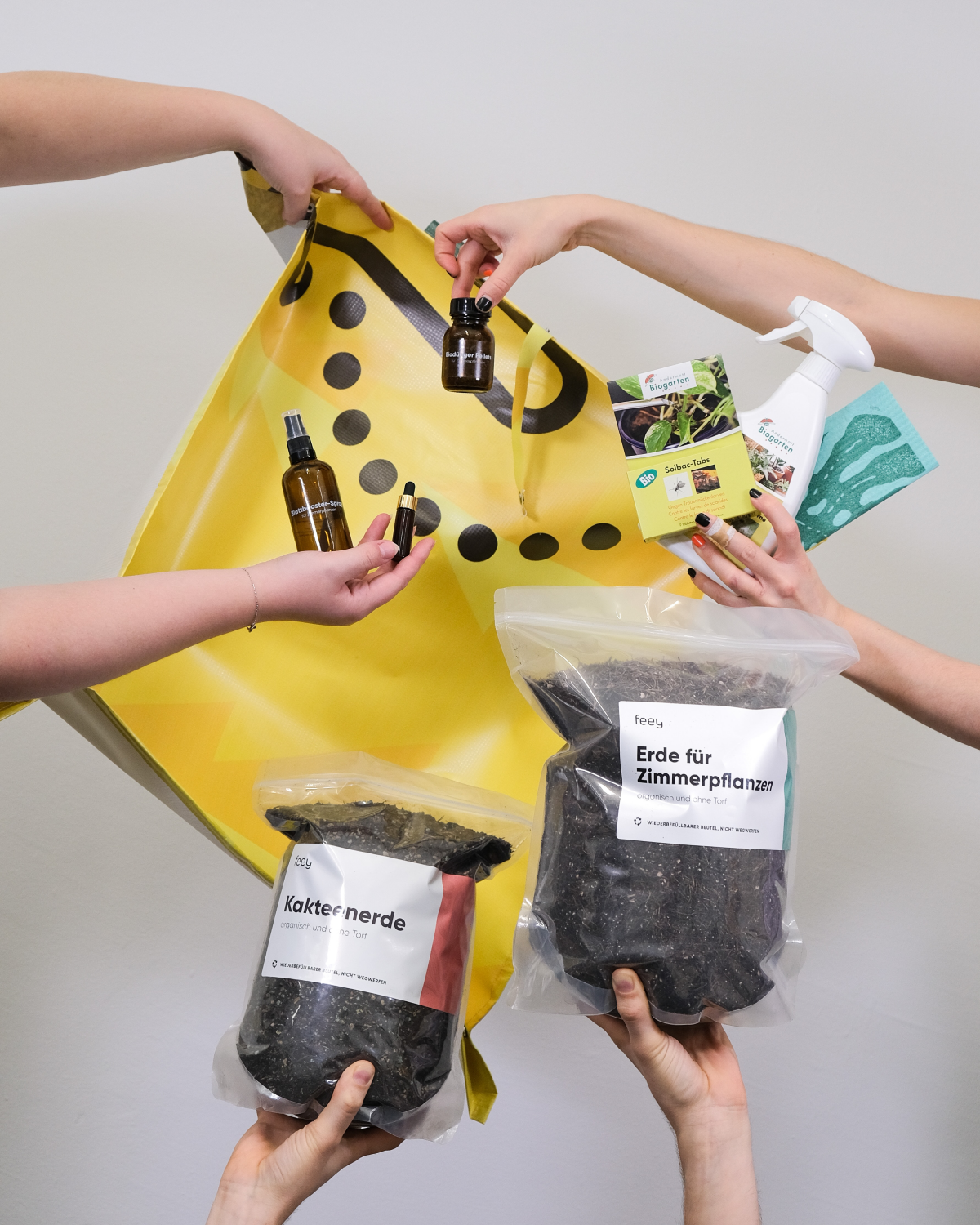
I have a few go-to materials. You can usually grab a 2-cubic-foot bag of these at any garden center for about $6 to $9.
- Pine Bark Nuggets: I like these because they’re chunky, letting air circulate so they don’t become a soggy mess. They do break down slowly, which is a plus. The only con is they can sometimes wash away in a torrential downpour on a slope.
- Shredded Hardwood Bark: This stuff is great because it knits together and stays put, making it ideal for sloped areas. It looks tidy and provides excellent insulation.
- Pine Straw (Needles): If you can get it, it’s fantastic. It’s super light and airy and absolutely will not compact.
Now, here’s how to apply it. Spread a layer 3 to 4 inches deep over the entire root zone, which usually extends as far out as the branches do. Then—and this is the most important part—pull the mulch back from the main stems. Leave a 3- to 6-inch gap of bare soil right around the base, creating a “donut hole.” This keeps the crown dry and prevents rot.
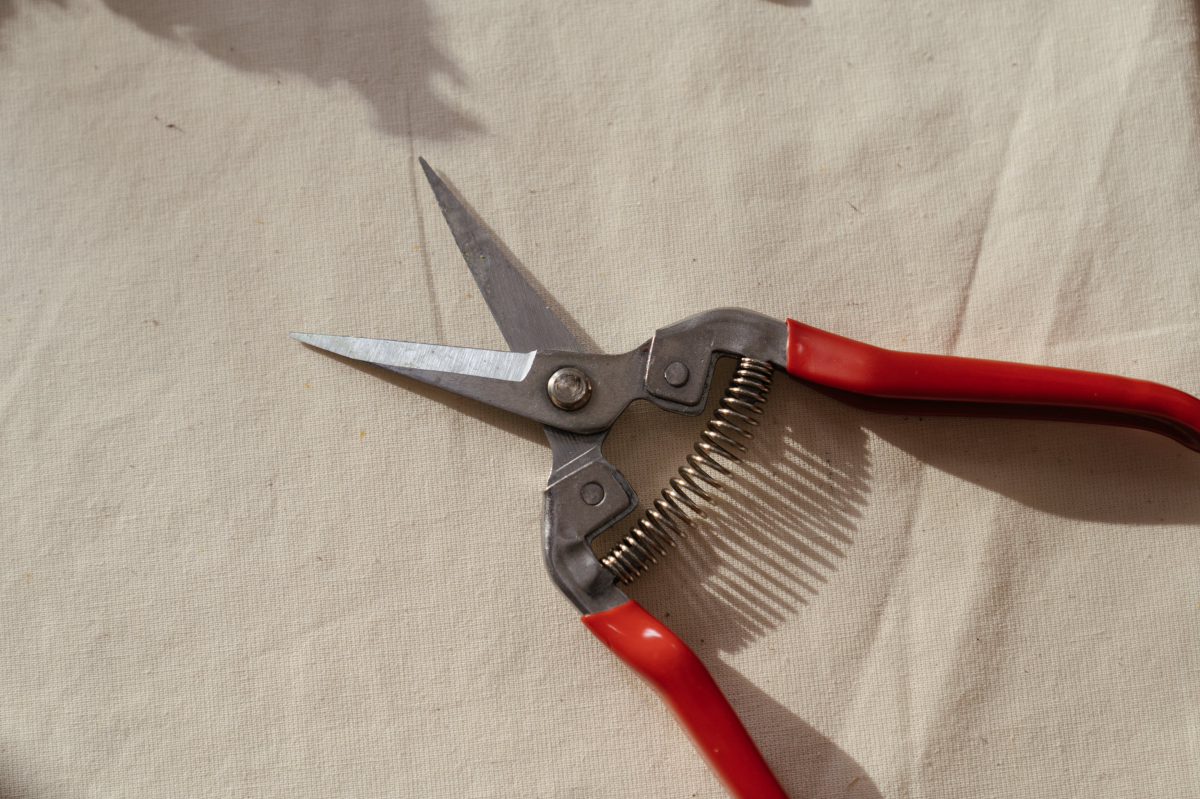
Quick Win: If you’re short on time, do this one thing. Go outside right now and pull any mulch or dead leaves away from the base of your vine. It takes two minutes and can literally save its life.
How to Prune Without Panicking
Pruning scares a lot of people, but with climbing hydrangeas, it’s all about timing and purpose. The ideal time is late winter or very early spring, right before the leaf buds start to swell. For me in Zone 6, that’s late February or early March. You can see the plant’s whole structure without leaves in the way.
When my team and I prune, we focus on three things:
- Health: First, cut out anything Dead, Damaged, or Diseased. Dead stems will be brittle and have no green inside if you scratch them. Snip them back to a healthy branch.
- Structure: Step back and look at the shape. See a branch heading for your window or gutter? Now’s the time to redirect it. Cut it back to a bud that’s pointing in the direction you want it to grow.
- Airflow: Thin out a few of the older, weaker stems from the center of the plant. This opens it up to light and air, which is your best defense against fungal diseases come spring.
Oh yeah, good tools make a difference. Invest in a pair of sharp bypass pruners. A solid pair from a brand like Fiskars will run you about $25, while top-of-the-line Felco pruners can be closer to $70, but they’ll last a lifetime. For bigger stuff, use loppers or a pruning saw. A quick wipe of the blades with rubbing alcohol between plants is a pro habit to prevent spreading disease.
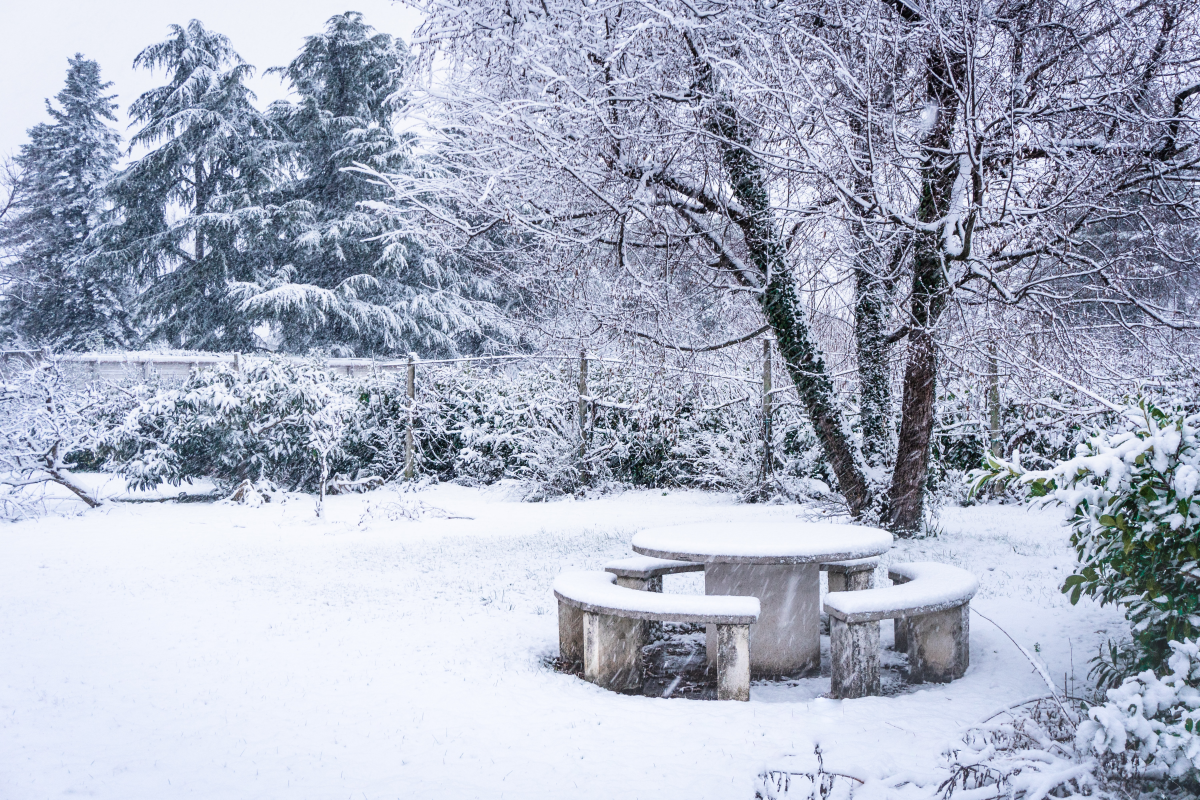
A serious safety note: If your vine is mature and needs ladder work, please be careful. If the job requires more than a 6-foot stepladder or is near power lines, it’s time to call in a certified arborist. Seriously. Expect to pay anywhere from $300 to $700 or more for them to prune a large vine, but your safety and the plant’s health are worth it.
Extra Protection for Tough Spots
If you’re in a really cold zone (like Zone 4) or have a very young plant, mulch might not be enough. The goal here isn’t to keep the plant warm, but to shield it from harsh wind and sun.
A simple burlap screen is the way to go. Just drive a few wooden stakes into the ground a foot away from the vine and staple burlap to them, creating a windbreak on the most exposed side (usually north or west). Leave the top open. This blocks the worst of the elements without trapping moisture.
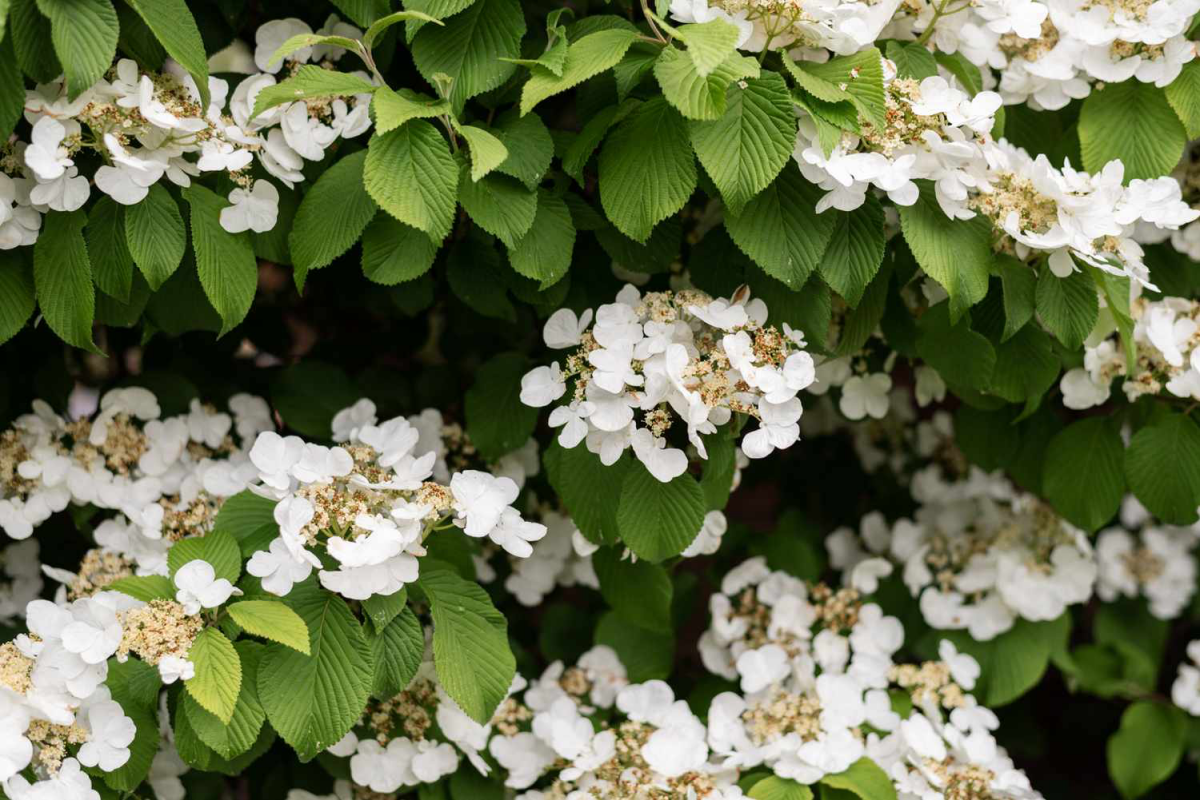
And if your climbing hydrangea is in a pot? It’s way more vulnerable. The best bet is to move it into an unheated garage or shed for the winter. It just needs to stay cold and dormant, but protected from the deep freeze. Check the soil once a month to make sure it’s not bone dry.
Quick Winter Troubleshooting
Even with great care, stuff happens. Here are a few common issues:
- Animal Damage: Rabbits and voles love to chew on bark in the winter. The best defense is a cylinder of hardware cloth (metal mesh) around the base of the plant. A small roll costs about $15 at a place like Home Depot. Make sure it’s about 18 inches high.
- Salt Damage: If your vine is near a salted walkway, that spray can be brutal. A burlap screen helps. In the spring, give the soil a good, long soak with fresh water to help flush the salt away.
- Freak Warm Spells: Sometimes a warm snap in February tricks the plant into sprouting early. There’s not much you can do. The new growth will likely get zapped, but the plant will usually push out more buds. You just might lose some flowers on those specific branches.
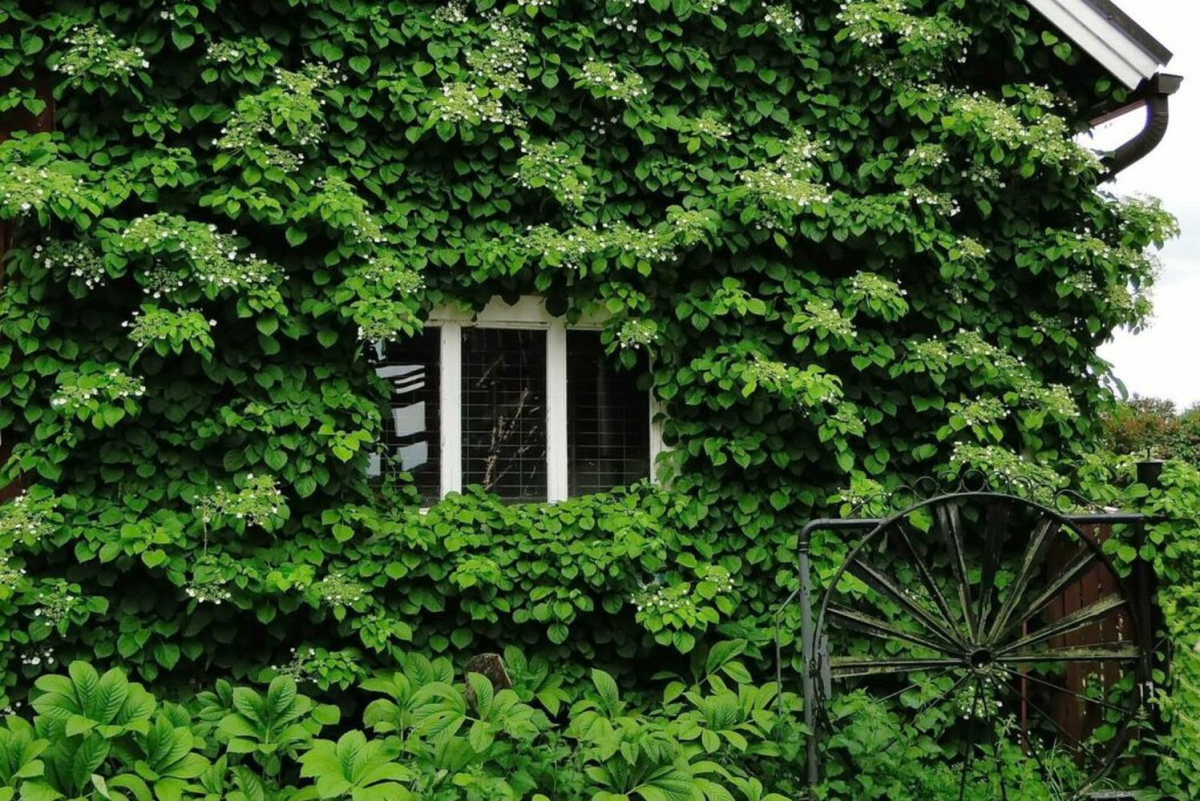
A Final Thought
Gardening is a partnership. Pay attention to your specific plant and your yard, and don’t be discouraged by a little winter dieback. A well-established climbing hydrangea is one tough cookie.
And be honest about your limits. Knowing when to call a pro isn’t a failure—it’s smart gardening. The quiet work you do now is an investment. When spring finally rolls around and you see those green buds starting to pop on the old woody vines, you’ll know you did everything right to set the stage for another year of beauty.
Galerie d’inspiration
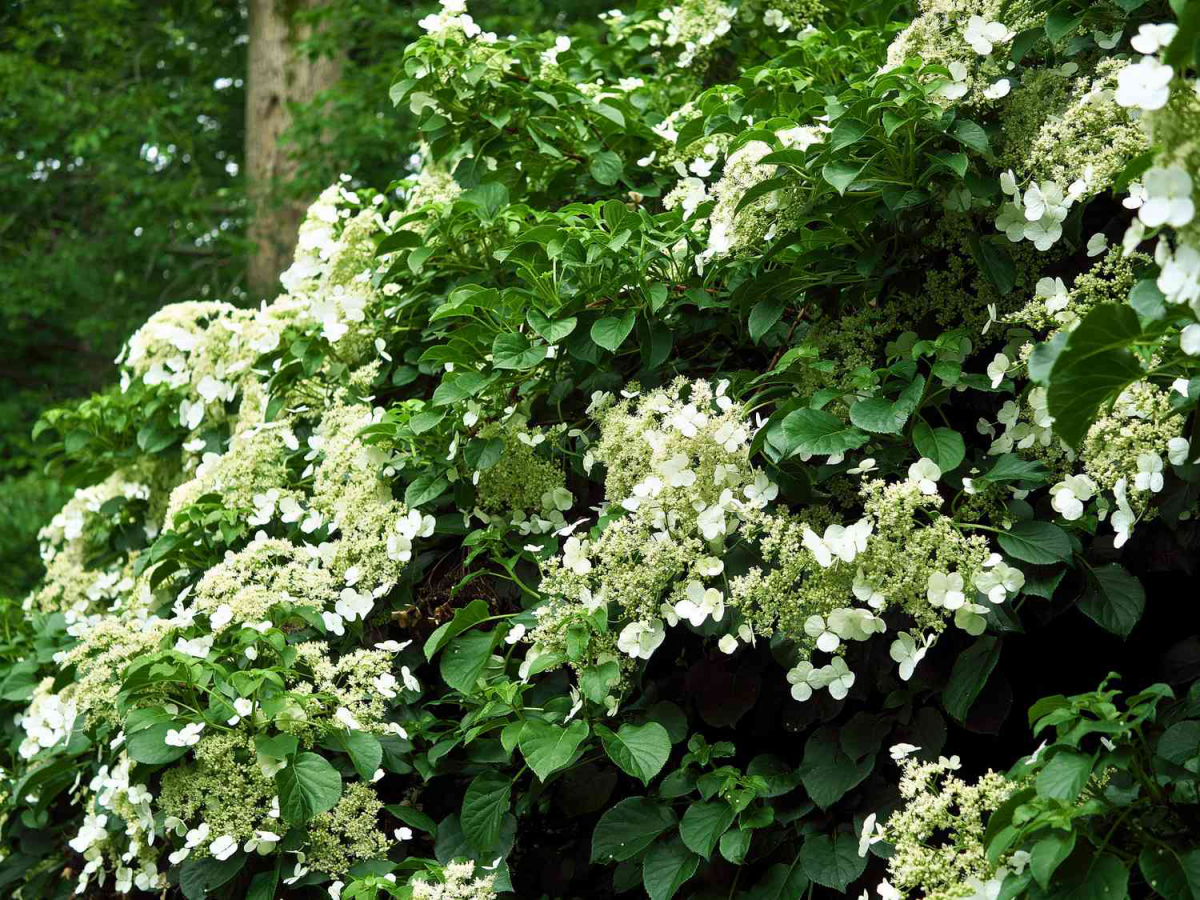
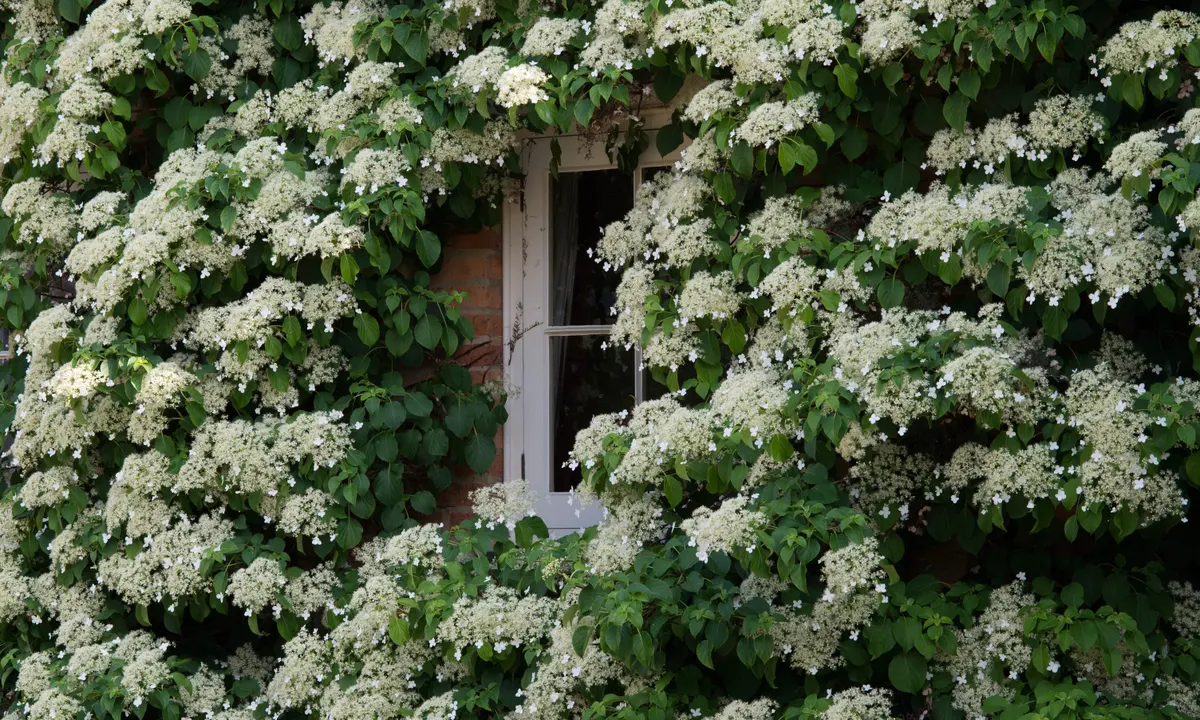
But should I really be watering my climbing hydrangea in the middle of winter?
Absolutely, but with nuance. Winter drought is a real threat, especially for younger plants whose root systems aren’t fully established. On mild, frost-free days (above 40°F / 4°C), check the soil. If it’s dry a couple of inches down, give your plant a deep, slow watering early in the day so it can absorb before temperatures drop at night. This prevents root desiccation, one of the silent killers during a dry, cold winter.
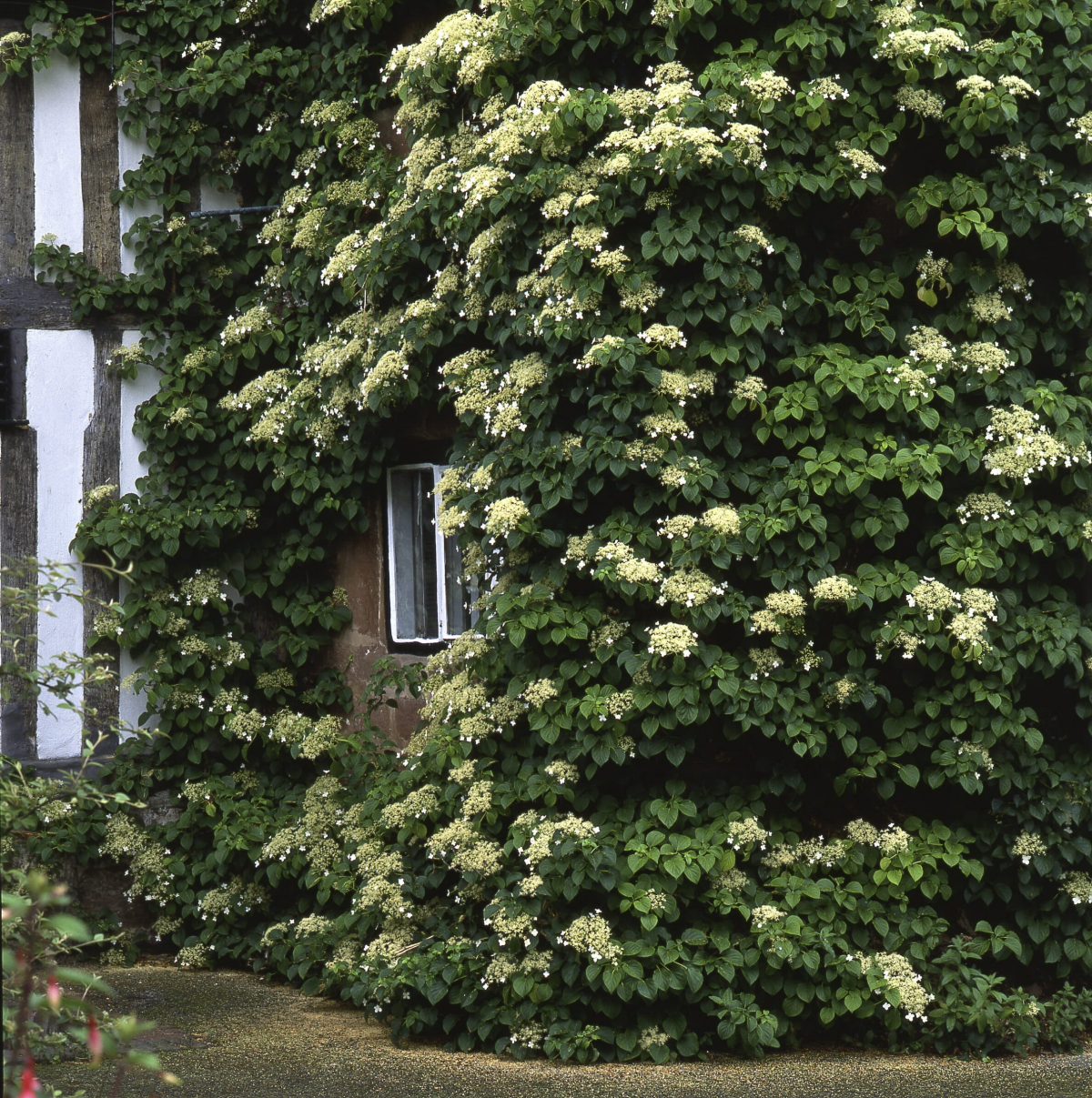
A mature climbing hydrangea can add up to 50 pounds of weight per square foot to a structure, especially when wet or covered in ice.
This is why initial support is non-negotiable. While the vine’s own aerial rootlets are strong, they can fail on smooth walls or be torn away by harsh winds. For new installations, guiding the primary stems along a sturdy wire trellis system, using robust stand-off fixings like those from Gripple, provides an essential structural skeleton that will prevent catastrophic failure years down the line.
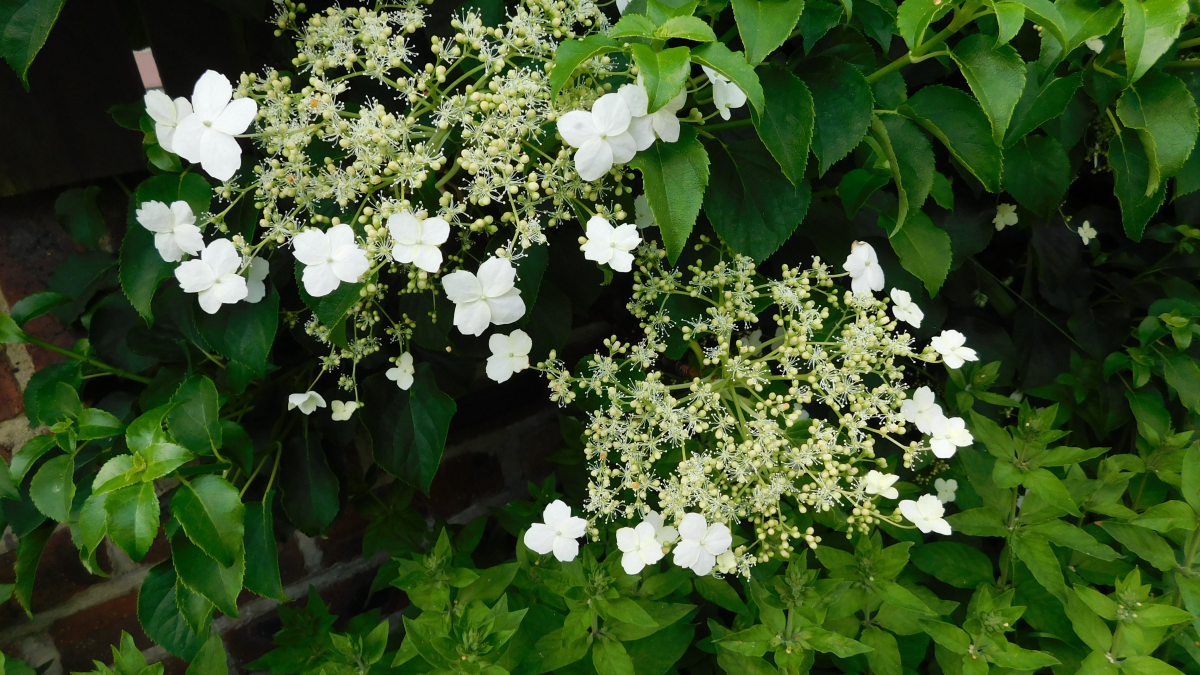
Beyond the practicalities of survival, take a moment to appreciate the vine’s stark winter beauty. The cinnamon-brown, peeling bark on mature stems creates a stunning texture against brick or stone. After a light snowfall, its intricate network of branches forms a delicate, skeletal silhouette, offering a structural elegance that few other plants can match in the dormant garden.
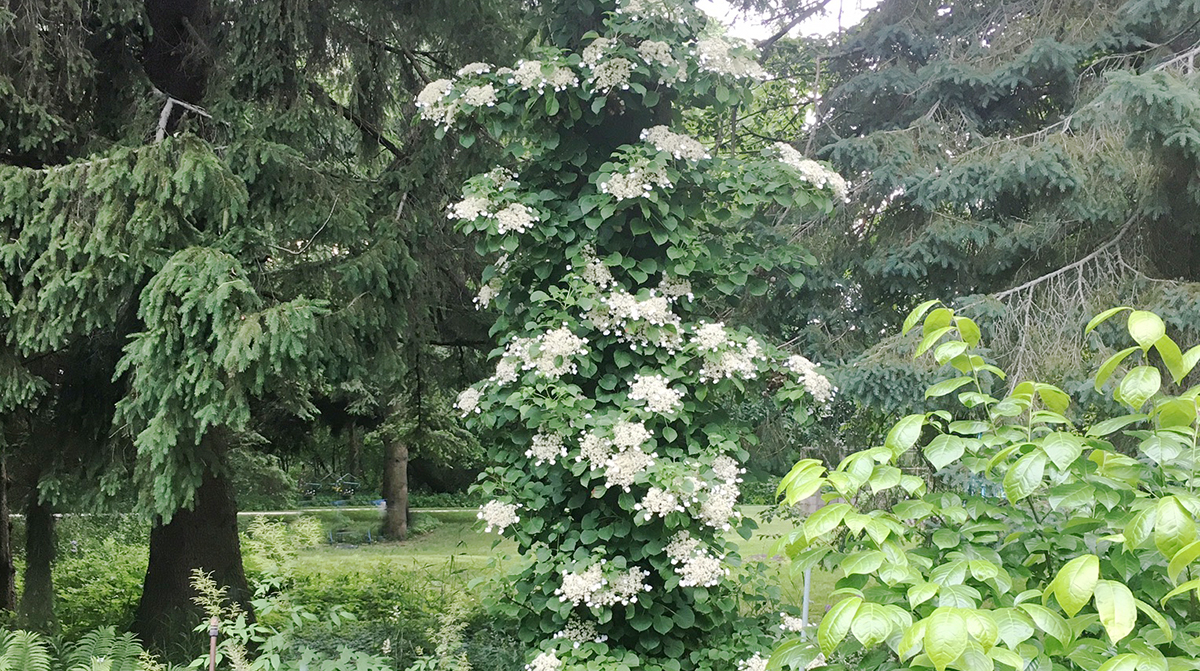
- Protects the delicate surface roots from freeze-thaw cycles.
- Conserves precious moisture during dry, windy periods.
- Breaks down slowly, enriching the soil for spring growth.
The secret? The ‘donut’ method of mulching. Instead of piling it against the stems (the dreaded ‘volcano’), apply a 2-3 inch layer of coarse, organic mulch like pine bark fines or leaf mould in a wide ring, leaving a 4-6 inch gap of clear air around the plant’s base. This provides all the benefits without risking rot.
Masonry Wall: The classic choice. The porous surfaces of old brick, stone, or even textured concrete offer the perfect grip for the vine’s aerial rootlets. The wall also acts as a thermal mass, absorbing heat during the day and radiating it back at night, buffering the plant from extreme temperature swings.
Wooden Fence or Pergola: A great option, but it requires more guidance. The plant will need a trellis or wire system to climb, as its rootlets struggle to grip smooth, treated wood. Ensure the structure is strong enough to bear the vine’s eventual weight.










